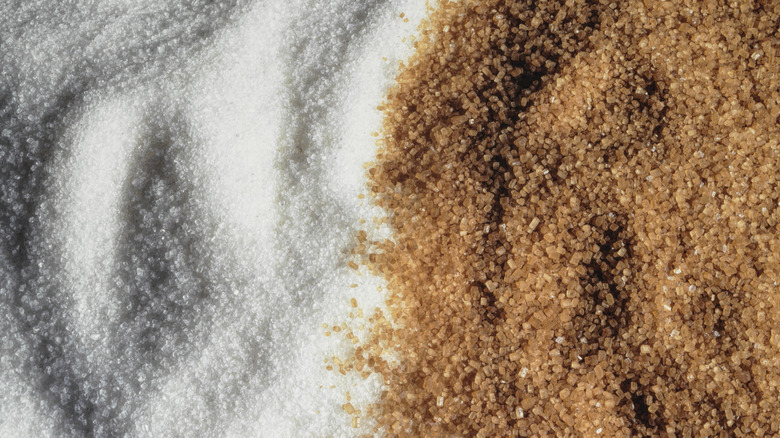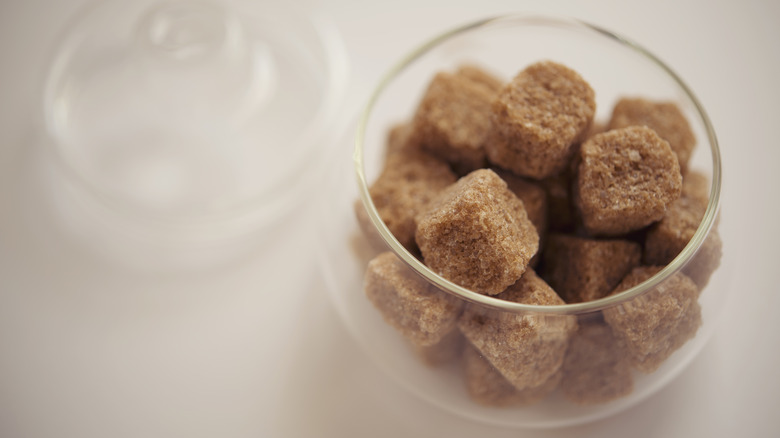The Easy Ratio To Remember For Making Brown Sugar At Home
Maybe you've run out of brown sugar, or perhaps you're just feeling a little crafty. Either way, the warm, molasses-infused sugar is an easy and simple ingredient to conjure up all on your own. All you'll need is white table sugar and molasses, but in what measure? Too much molasses will yield a heavy flavor, while too little molasses will prove ineffectual in adding either flavor or color. After all, there is a pretty big gap between white and brown sugar, especially when baking, so you'll want to get the proportions correct.
So then, what ratios should you use to make brown sugar? To make light brown sugar, you should add about a tablespoon of molasses per cup of white sugar. Now, if you want dark brown sugar, you should add 2 tablespoons of molasses for every cup of white sugar. Once you spoon in your molasses with the sugar, simply stir until the ingredients are fully combined. Of course, most of the time, you can substitute one form of brown sugar for the other, so don't worry if you poured just a bit too much or too little. Then again, if you simply need your brown sugar for a single recipe, you can always just add both your molasses and your sugar into the dish you are baking. The molasses and sugar should distribute evenly, and you'll be saved the effort of stirring.
Ratios, recipes, and storage tips for homemade brown sugar
Of course, the 1 and 2 tablespoons per cup ratio is only general guidance. You can always add more molasses to your white sugar if you prefer a more pronounced molasses taste. It's also important to consider what kind of molasses you use. There are three main types of molasses: light, dark, and blackstrap. Light molasses is the kind most often used in baking, and it's the type you'll want to reach for when making brown sugar. It has a warm but subtle flavor, and isn't bitter like blackstrap. Dark molasses has a richer flavor and is often used in gingerbread. If you enjoy a more intense flavor, you can experiment with using dark molasses in your brown sugar. Blackstrap molasses, on the other hand, is not as sweet and can often be bitter in flavor. This is usually used in savory recipes, so you might want to avoid it when making brown sugar.
Now, when it comes to storing your brown sugar, you'll want to be careful to avoid solidification. Brown sugar can, if left out or in an open container, dry out and turn into a solid piece, making it practically unusable. There are several ways of preventing this. For example, you can place a piece of bread into your container as this will keep your sugar from drying out. Alternatively, one way to store brown sugar properly is to place a small piece of terracotta (called a sugar saver) into your jar. This will keep your brown sugar soft, fresh, and full of that rich molasses flavor.

